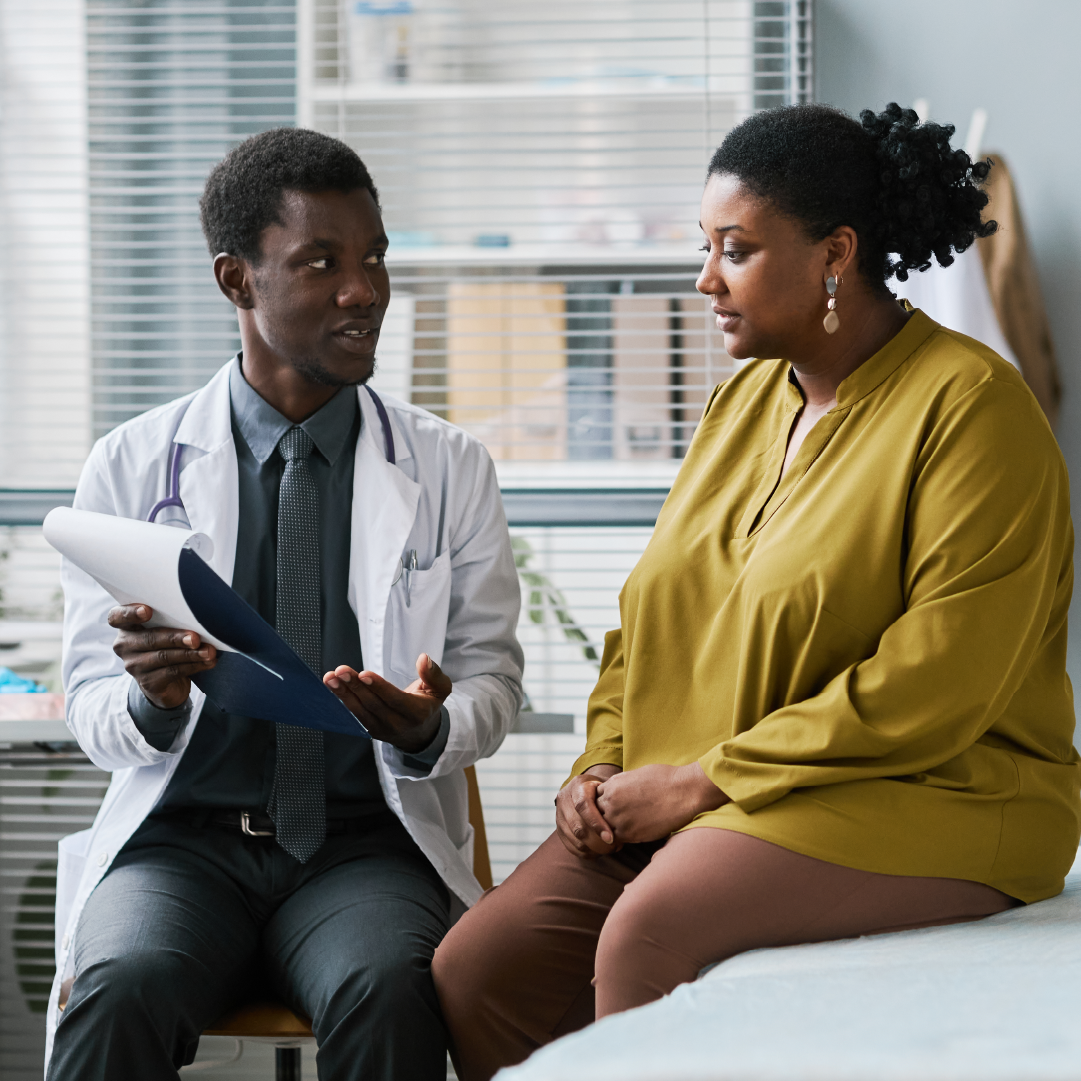
Transforming Care: Addressing Health Inequities and Pitfalls through Innovative Models of Care
11.21.2024
As part of our mission to advocate for equitable, affordable, high-quality care and coverage for all in the U.S., Families USA is working to support health care policies that move toward an equitable and person-centered system designed to achieve optimal health and well-being for all.
Too many people in the United States are paying too much for low-quality health care. And unfortunately, our health care system is not doing enough to reward doctors and medical facilities for providing high-quality care and improving health outcomes for the people they serve. We need to invest in new, innovative solutions that change the way in which we pay for and receive care.
A consequence of the inefficiencies of this system means too many Americans are dying while waiting for organ transplants they desperately need, barred by financial or systemic issues with transplant selection and delivery. New innovative models of care introduced this year by the Centers for Medicare & Medicaid Services (CMS) are promising steps forward in addressing significant racial and socio-economic disparities with transplant recipients, ensuring informed and shared decision-making between providers and patients and making sure providers are held accountable to a high standard of care.
Kidney transplant recipient Paul Gibbs sat down with us to discuss to talk about his own experience to help fellow recipients, health care advocates, and more to understand how a new payment model can change the standard of care for the better. Read below for the full interview.
—
Paul Gibbs, Utah
I was born with a condition called bilateral ureteral reflex. Essentially, that means that my ureters were sending urine back up into my kidneys instead of down into my bladder, causing hydronephrosis (the buildup of excess fluid). I’d had nine surgeries for this by the time I was a year old, and I’d had recurring infections in my childhood. In 1996 they found that the reflux was getting worse, and there was some talk that I’d need a transplant at some point, and then things just seemed to be fairly normal for quite some time until in the fall of 2007 — I started getting sick much more frequently and I didn’t know why. In late October 2008, I was told I needed a transplant sooner rather than later, and I eventually received a kidney from a living donor on August 11, 2009.
How long were you told you would have to wait for a transplant?
I was told that if I went on the transplant list it could take a year and a half or more. That’s one of the reasons I was strongly encouraged to find a living donor if possible.
How did you feel while you waited, and how much communication did you have with your doctors during that time?
Waiting for my transplant was one of the most frightening and soul-crushing experiences of my life. I was feeling the effects of the illness more and more, and I had to pull back a lot on what had been a very active lifestyle where I was working, going to film school and doing gig work as a stage actor while also being a caregiver for my wonderful niece and nephew. Knowing that my kidneys were failing and the feeling of losing control of my body was so traumatic. Not knowing when or from where that kidney was coming was terrifying. My transplant coordinator kept in regular contact and kept me in the loop as much as possible, but I still felt like I didn’t fully understand what was going on much of the time because I’m not a doctor.
At the time that you started speaking with your doctors about transplant options, did you feel fully informed, and did you think the care providers were well-trained on how to have informative, compassionate conversations?
I didn’t feel fully informed when it started. I saw multiple doctors about it, and between them and the transplant coordinator I felt I was able to learn a lot, both about what was going on with my kidneys at the time and what the transplant would be like. My transplant coordinator was great, and she was sensitive to my emotions and gave me a lot of great information. But, for me probably the most overwhelming part was learning about all of the new medications I would be taking. The sheer number of them, how vital it was not to miss doses and the potential side effects were all very intimidating.
I felt like they tried to be respectful and compassionate, but that was difficult because scaring the patient isn’t good, but 15 years later I find it even more important than I did then that they not underplay it. I don’t think I was prepared for just how much the steroids were going to mess with my moods and emotions until I was experiencing it.
Did you have consistent care with one team of providers, or did you move around within care systems, having to re-explain your diagnosis?
I was fortunate to have the same primary care doctor, nephrologist and transplant coordinator the whole time, and that gave me a sense of security and trust. But because the transplant work up requires so many different tests checking every system of the body to make sure you’re a good transplant candidate, I saw a lot of different providers and specialists of different kinds. It was overwhelming and there was quite a bit of explaining things again and again. Fortunately, it was all within Utah’s Intermountain Healthcare system except for the dental exam, so at least that made it a bit easier.
To the extent that you feel comfortable, would you mind sharing how often money, or your financial ability to afford a transplant and post-operative care, came up during your doctor’s appointments?
The financial situation was always being discussed in every meeting with everyone, because I was uninsured. That was the most terrifying part of the experience, because I was being told I needed a $79,000 surgery and then a couple of thousand dollars’ worth of medication to maintain the new kidney. There was no possible way I could pay for that. There were so many procedural hoops to jump through to qualify for dual coverage through Medicare and Medicaid, and it really varied how compassionate and understanding the financial and insurance people were.
It was a long, terrifying, soul-crushing wait of things going in fits and starts to qualify, with the insurance requirement not always matching up with what the doctors felt was best for me. Even talking about this I feel the overwhelming fear coming back. It felt like my body was a time bomb, and we knew how to defuse it, but not if or when we’d be allowed to. It’s a terror I wouldn’t wish on anybody, ever.
—
Despite the fear of his worsening condition, the stress of finding a donor, and the complications with medications following a procedure, for Paul, the most terrifying part was still the financial burden, the cost of keeping himself alive.
Fear of affordability and financial barriers to care are unfortunately not unique, and hospitals have historically performed a “wallet biopsy” on prospective transplant candidates who must prove they can afford post-transplant care. This has prevented lower-income individuals from even being placed on the transplant list, let alone receiving a life-saving organ donation.
This historical inequity is unacceptable and must be changed.
—
How may your experience receiving a kidney transplant have differed from others? Did you receive barriers to obtaining a transplant others may not have or vice versa?
My experience was different in multiple ways. First because the diagnosis felt so sudden, and then because I was lucky enough to have multiple options for live donors. After my twin brother was ruled out as candidate because of his own health problems, I had 11 different friends from the theater community volunteer to be tested. The transplant center actually told me that they could only test three candidates at a time and to please have my friends stop calling and asking to be tested until they’d been through the candidates they already had.
My family and friends also did amazing fundraising work and raised more than $12,000 for me from various events and activities. That was amazing and I’ll always be grateful for it, but of course $12,000 doesn’t get you a $79,000 surgery. And unlike most patients, I needed two surgeries. For most the old kidney is usually left in place, however in my case the doctors decided that my old kidneys were so infected and full of cysts, etc., that they would pose a danger to the new one.
Before I could get either surgery, I had to qualify for Medicare. And that was a difficult process, and it was a major disappointment for everyone (especially me) that I had to go through three months of dialysis to qualify. I was not on dialysis, and the doctors were hoping to avoid forcing me to go through it. But those three months were required for me to qualify for Medicare.
So I had a tube implanted in chest and went through three months of a grueling, sometimes very painful medical process that my doctors didn’t think was in my best interest in order to qualify for coverage to get what I really needed. As it turned out, because they ended up deciding to do the extra surgery to remove my kidneys, dialysis was necessary for the five weeks between surgeries. But the three months before that weren’t necessary, and I still feel that was bureaucratic barrier wasn’t good for anyone.
Despite the dialysis difficulties and the fear over coverage and the ability to pay I feel that overall I was much more fortunate than most transplant patients and had advantages. I had as good a support system as you could imagine, with family and friends who were looking after me and never letting me feel like I was going through this alone. So many people don’t have one person who’ll be tested as a donor, and I had so many. It’s difficult and painful for me to even think about what it’s like for someone who doesn’t have the support I had.
—
Interested in learning more about health system transformation? Read more about health care value and the Center for Affordable Whole Person Care. Interested in sharing your story with Families USA or reading about others with similar experiences? Visit our Story Bank.



